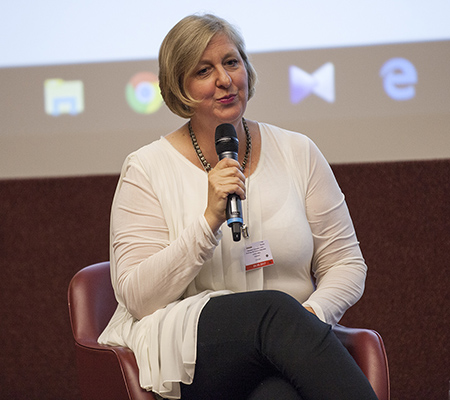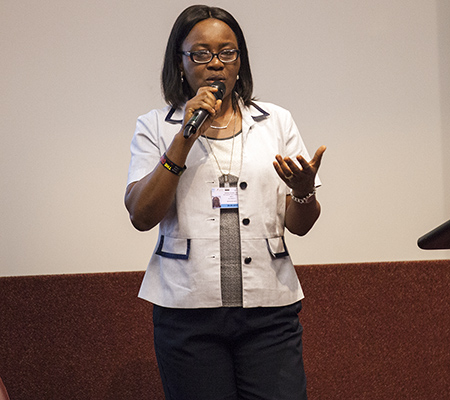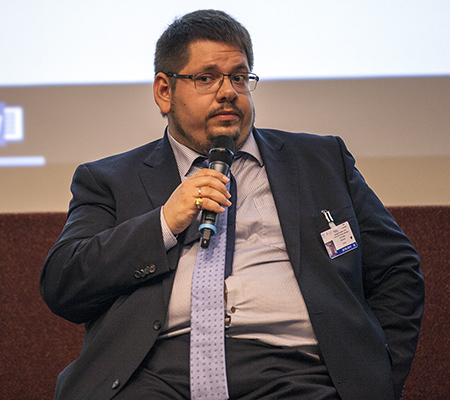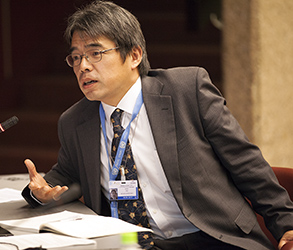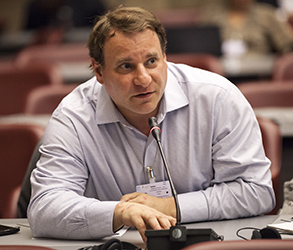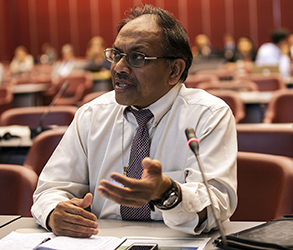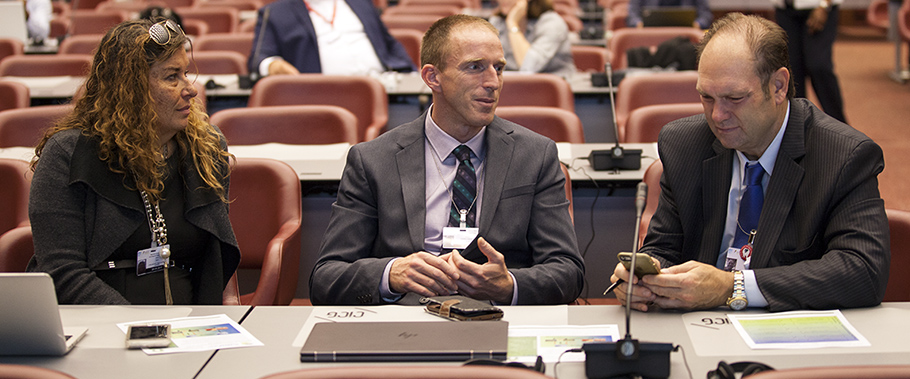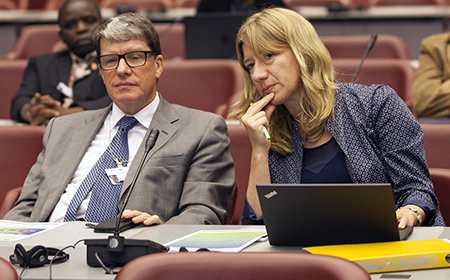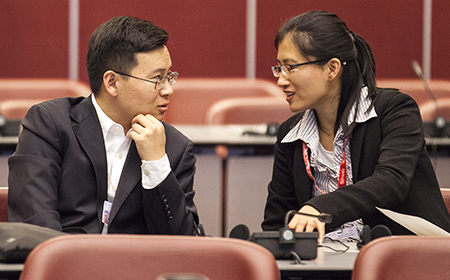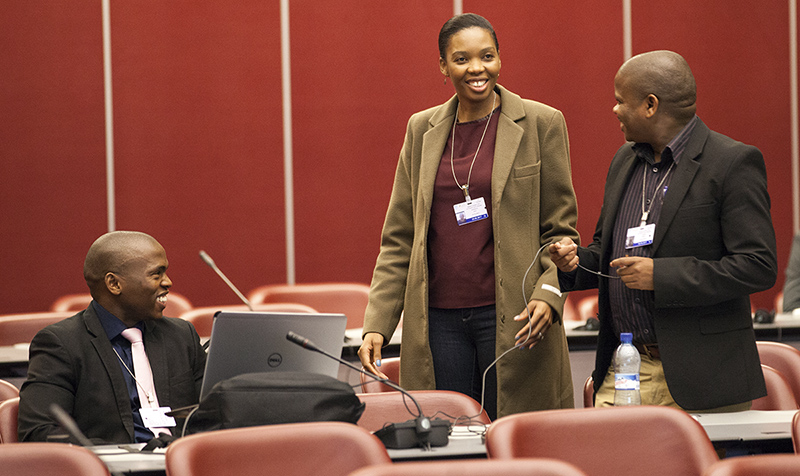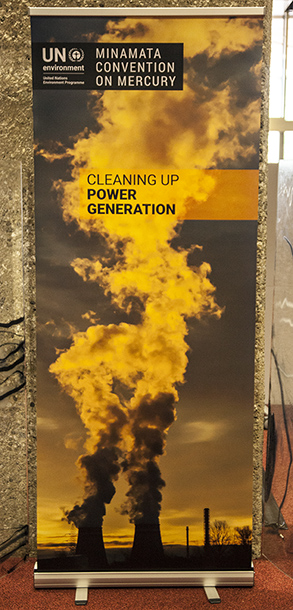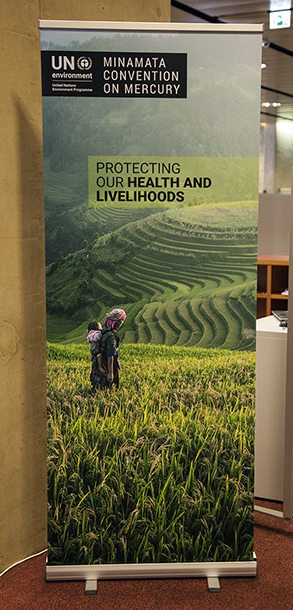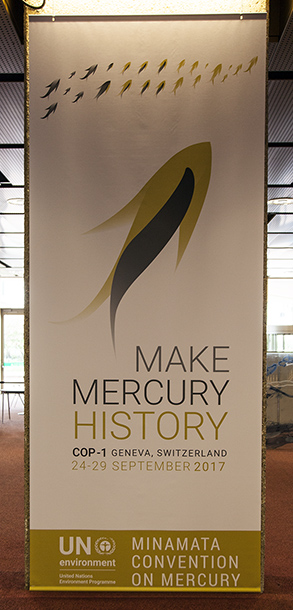Summary
The session was moderated by Abiola Olanipekun, Secretariat of the Basel, Rotterdam and Stockholm Conventions, who outlined the focus of the thematic session as: use of alternative technologies; improved pollution controls and monitoring; enhanced combustion efficiency; and best practices across a range of industries, including coal burning, smelting, waste incineration, and cement. She identified coal burning as the major source of atmospheric mercury emissions. Olanipekun said mercury can enter the food chain, and that determining mercury concentrations in the environment is key. She then posed questions to the panelists, including on: how to identify key emissions sources; what control measures are practical and feasible; whether different types of controls are needed for different facilities; and how to measure control effectiveness.
On how to identify key emissions sources, Shuxiao Wang, Tsinghua University, China, emphasized the need for parties to develop national inventories including for power plants, smelting, cement and waste incineration. While noting the usefulness of the UNEP Toolkit for identification and quantification of mercury releases, she emphasized that those estimates have high uncertainties and that national estimates from actual measurement at point source are preferable. Using the example from China, she said emissions calculated from point source measurements were one third than would have been using UNEP emission factors. Wang emphasized the cost of monitoring. Using an example of size (in MW) for coal plants in China, she emphasized that the nationally-determined nature of monitoring can mean that the definition of source identification criteria can affect which facilities are monitored.
On practical and feasible control measures, Alexander Romanov, Scientific Research Institute for Atmospheric Air Protection, The Russian Federation, identified key considerations, including whether: a particular facility should be controlled; particulate matter controls already are in place; to add oxidizers to capture mercury; to improve the efficiency of burning; to change the coal mix; there is a need to pre-treat coal. He said the guidance developed by the INC process can help parties understand their options. Romanov underscored the need to balance cost, technical limitations and any other limitations. Citing the example of zinc smelting, which results in mercury in secondary products such as sulfuric acid, he stressed the importance of treating mercury rather than sending it “downstream.”
Peter Nelson, Macquarie University, Australia, said different types of controls are needed for different facilities. Noting that captured atmospheric mercury can be re-emitted or pollute land and water if not properly treated, he called for a holistic approach to mercury pollution. Nelson emphasized that capture depends on the chemical state of mercury, stressing that elemental mercury is very difficult to capture and identified activated carbon as an effective method for mercury capture. He said it is important to treat waste flows resulting from atmospheric mercury capture to avoid re-emission.
Alexandra Steffen, Environment Canada and Arctic Monitoring and Assessment Programme, emphasized the importance of measurement and monitoring to assess the effectiveness of the Convention. She said the key aspects of monitoring include knowing where to measure, how to measure, for how long to measure, and external factors affecting measurement. She explained the differences between stack, near-stack and remote monitoring, as well as the time frames and time lags between mercury emissions abatement and measurable reductions in atmospheric concentrations. She stressed the importance of external factors such as climate change, land use and forest fires in measurement and monitoring. Steffen said active mercury monitoring still lags behind monitoring of elemental and particulate mercury, but it is also has a shorter residence time in the atmosphere and travels shorter distances. She noted that monitoring programs have to work within the constraints of available funds.
Ilia Ilyin, European Monitoring and Evaluation Programme (EMEP) of the Convention on Long-range Transboundary Air Pollution (LRTAP) explained how LRTAP’s work relates to the Minamata Convention, noting that LRTAP’s Protocol on Heavy Metals targets, among others, mercury. He described methods to calculate mercury concentrations in Eastern Europe and noted a network of 30 measurement stations. Ilyin also described LRTAP’s modelling approach to assess mercury pollution and methodologies linking mercury concentrations to human health. He said data is publicly available through EMEP's website.
Following the panel’s interventions, there was an open discussion with the public. Issues addressed included: how to measure particulate and vapor mercury emissions from dental offices; COP guidance on high-ash content coal emissions; and measurement of reactive mercury gases.
IISD Reporting Services, through its ENB+ Meeting Coverage, is providing daily web coverage from the Thematic Sessions at Mercury COP1.
Photos by IISD/ENB+ | Mike Mizurakis
For photo reprint permissions, please follow instructions at our Attribution Regulations for Meeting Photo Usage Page.
From L-R: Alexandra Steffen, Environment Canada and Arctic Monitoring and Assessment Programme; Alexander Romanov, Scientific Research Institute for Atmospheric Air Protection, Russia; Peter Nelson, Macquarie University, Australia; Shuxiao Wang, Tsinghua University, China; Ilia Ilyin, European Monitoring and Evaluation Programme of the Convention on Long-range Transboundary Air Pollution; and Abiola Olanipekun, Secretariat of the Basel, Rotterdam and Stockholm Conventions
Alexandra Steffen, Environment Canada and Arctic Monitoring and Assessment Programme
Shuxiao Wang, Tsinghua University, China
Abiola Olanipekun, Secretariat of the Basel, Rotterdam and Stockholm Conventions
Alexander Romanov, Scientific Research Institute for Atmospheric Air Protection, The Russian Federation
Eisaku Toda, Minamata Secretariat
Michael Bank, University of Amherst
Kasturirangan Kannah, Bromine: Powering Science and Technologies (BSEF)
Anita Tibau, Damir Skripec, and David Simone, International Academy of Oral Medicine and Toxicology (IAOMT)
The Science Synthesis team of the 13th International Conference on Mercury as a Global Pollutant (ICMGP2017)

